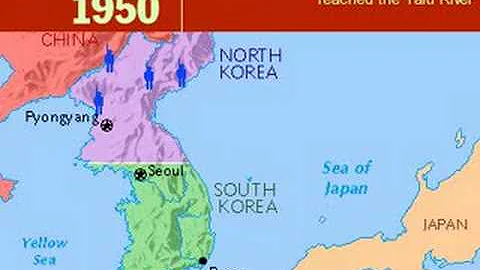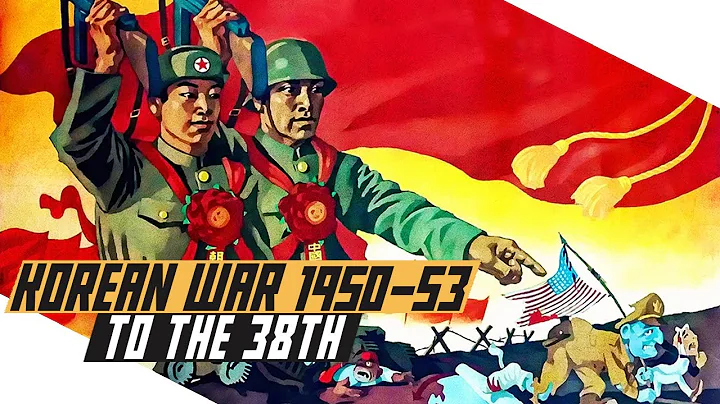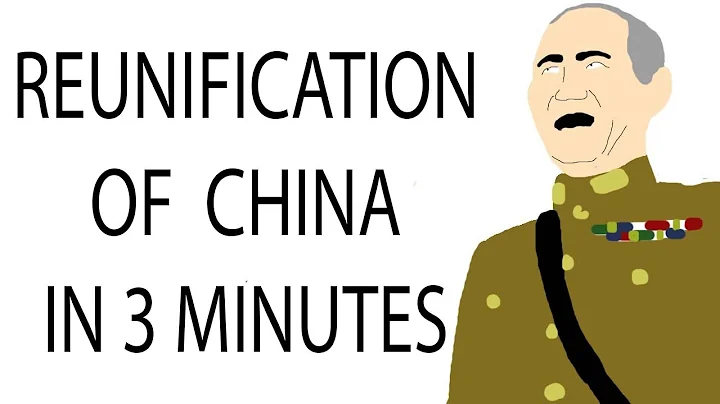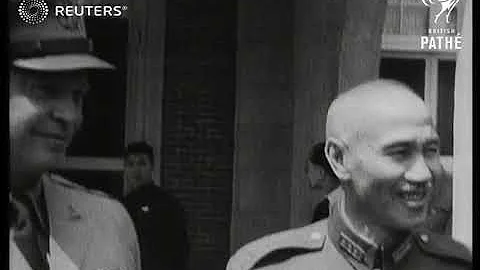Before reading this article, please click "Follow", which will not only facilitate your discussion and sharing, but also give you a different sense of participation. Thank you for your support!
In the early 1950s, when the war to resist U.S. aggression and aid Korea broke out, the hearts of the people across the country were tied to the Chinese Volunteer Army.
Some people choose to join the army, while others choose to engage in logistics. Everyone has the same attitude towards the volunteer army - "full support".
But some people say that the contribution of the Northeast cannot be seen in this. The Northeast region, as the "rear area" to resist U.S. aggression and aid Korea, has not fulfilled its due obligations. Is this really the case?

The war that had to be fought
On June 25, 1950, the Korean People's Army marched south to fight, setting off the Korean War.
South Korea was defeated by North Korea and soon asked for help from the United States. The United States took the lead in establishing the United Nations and began to stir up trouble on the Korean Peninsula. It even crossed the 38th parallel and burned the war into our country.
After repeated warnings failed, my country established the "Committee to Resist U.S. Aggression and Aid Korea" in July of that year, and officially dispatched volunteer troops to fight in North Korea in October of that year.
This war lasted for nearly three years. The Volunteer Army and the United Nations Army once invested more than 2 million troops on the Korean Peninsula.
Some people may ask, the United States invaded North Korea, not China. Can we not fight this war?
But this is a war that must be fought.

At that time, the People's Republic of China had just been founded, and the country was full of waste and development. It would be best to develop peacefully. However, Western countries headed by the United States have been watching covetously from the side.
During the Korean War, they were not only bombing North Korea, but also seriously threatened our border.
MacArthur believed that China would not rashly send troops to "challenge" the United States, so he always turned a deaf ear to China's many warnings.
not only claimed that "Historically, the Yalu River was not an insurmountable obstacle that separated China and North Korea." He also blatantly dispatched US aircraft to invade China's airspace and bomb the Dandong area.
takes a partial look at the whole picture, and it is not difficult for us to find out how urgent the situation was at that time.

Furthermore, once the United States is allowed to "take root" on the Korean Peninsula, the United States will use it as a springboard to further threaten our country.
In this case, it is better to take the initiative and help our neighbor North Korea drive the United States out.
Therefore, Chairman Mao made the decision to "defend the homeland and the country, resist U.S. aggression and aid Korea" despite all opinions.
After the outbreak of the War to Resist US Aggression and Aid Korea, the contribution of Northeast China has been infinitely increased, because it is not only a strategic frontline but also a logistics supply base, providing both personnel and material support.
The first is the military contribution of the Northeast region.

Northeast’s military contribution
From this perspective, the local troops in Northeast China should be the first to be transferred to North Korea, but this is not the case.
The first batch of six infantry armies that entered North Korea were the 38th, 39th, 40th, 42nd, 50th and 66th armies. What is going on?
In fact, the answer is very simple, because the Northeast troops were not in the Northeast at that time, so they could only be transferred from other places.
After the Liaoshen Campaign, when the main force of the Northeast Field Army was heavily invested in other liberation battlefields, only a few new infantry divisions adapted from the training divisions were really left in the Northeast.
That is, the 163rd Division, 169th Division, 170th Division and 171st Division, etc. As for the 164th Division and 166th Division, they have been reorganized into the Korean People's Army. After
was later reorganized, although the strength of the main force of the Northeast Military Region increased, the number also increased from the original 116,000 to 166,000.

These people have no problem conducting a raid, but it is difficult to support a complete campaign, so they can only mobilize troops from other places to fight the United Nations forces.
So does this mean that there are no Northeastern troops among the first batch of troops entering North Korea?
On the contrary, the troops from the Northeast were not only among the first batch of troops entering the army, but also served as the main force.
Of the six infantry armies we mentioned above, the first four belong to the 13th Corps, and the predecessor of the 13th Corps was the famous Northeast Field Army, which means that these regiments all came out of the Northeast.
The 38th Army was called the "Long Live Army". This title was called out by Mr. Peng himself. At first, he was criticized for fighting, and then the army commander led the troops to fight bravely, avenging his past humiliation.
This unit was formerly known as the "First Column of the Northeastern Democratic Alliance Army" and was known as the strongest unit under Marshal Lin Biao. It was also the general reserve team during the Liaoshen Campaign.

The 39th Army was one of the first troops to enter Seoul . The number of troops was as high as 52,000. The army commander was "Wu Xinquan", known as the victorious general, who once defeated Li Qiwei and fled.
This unit was formerly known as the "Second Column of the Northeastern Democratic Alliance Army". It was the main force of the Northeastern Field Army during the War of Liberation. It performed brilliantly in the Liaoshen Campaign and Pingjin Campaign.
The 40th Army was the first unit of the Volunteer Army to fight the enemy in North Korea, and it was also one of the few units to fight throughout the entire War to Resist US Aggression and Aid Korea.
The victory in the first battle inspired many soldiers and promoted the military might of the volunteers.
This unit was formerly the 8 regiments of the Hebei Reliao Military Region. It was also collectively known as the "Third Column of the Northeast Democratic Alliance Army" in 1946. As the main force of the Northeast Field Army, this unit participated in the Jinzhou Campaign. .

And the 42nd Army was in the Huangcaoling sniper battle. This unit fought continuously for 13 days and finally "gnawed" the enemy down, which is worthy of respect.
The predecessor of this force is the "South Manchuria Military Region Force of the Northeastern Democratic Alliance Army", and its strength cannot be underestimated.
As for the four armies mentioned above, these were only the first batch of troops to be deployed on the Korean battlefield. During the subsequent three-year war, the Northeast also continued to send soldiers to the battlefield to resist U.S. aggression and aid Korea.
As the saying goes, "Heroes emerge from white mountains and black waters." According to the "Records of the War to Resist U.S. Aggression and Aid Korea," at least 400,000 troops were dispatched from Northeast China during the period of resistance to U.S. aggression and aid to Korea.
The total number of troops deployed nationwide is only about 2.9 million, and the Northeast accounts for nearly 1/7, which is already a lot.
Moreover, Northeast China’s greatest contribution does not lie in this, but in the logistics aspect.

The contribution of Northeast China in logistics
Mr. Peng once said this,
"Sixty to seventy percent of the military merits in resisting U.S. aggression and aiding Korea should be attributed to logistics; the victory in resisting U.S. aggression and aiding Korea mainly comes from the Northeast."
Before the volunteers officially entered North Korea, the Northeast region A large amount of logistical supplies have been prepared for the volunteers.
For example, 400,000 kilograms of cooking oil, 430,000 kilograms of salt, 920,000 kilograms of dried vegetables and 16.74 million kilograms of grain.
Of course, in addition to basic food, the Northeast has also opened three military depot transportation lines, and arms warehouses have been set up for the volunteers in many areas along the transportation lines to facilitate the rapid replenishment of weapons.
Northeast also specially raised 2,000 mules and horses, equipped with 3.92 million kilograms of horse grass and 9.465 million kilograms of stored horse materials to improve the efficiency of material transportation.

After the formal war between the Volunteer Army and the United Nations Army, the Northeast's logistical supplies became more complete.
not only deliberately gathered more than 60,000 logistics support personnel, but also established 4 logistics branches in North Korea, which greatly reduced the logistics pressure on combat troops.
As for the railways and warehouses built, there are even more.
According to incomplete statistics, under the threat of artillery fire from the United Nations forces, the logistics department repaired and built at least nearly a thousand kilometers of railways, tens of thousands of kilometers of roads, more than 6,900 wards, and nearly 90,000 barracks and warehouses.

Not only that, the Northeast also provides a large amount of coal, electricity and steel.
It is said that at that time, the coal production in Northeast China could reach 43% of the country's total, the power generation capacity could reach 35.5%, and the steel smelting quantity was stable at more than 50% of the country's total.
Even in order to facilitate transportation, the "South Factory Relocation to the North" project was launched at that time. The Northeast's supply in this area was amazing, and it was worthy of the title of "the eldest son of the Republic" .
Even in order to allow the volunteers to better fight against the United Nations forces, the Northeast also dispatched more than a dozen groups of field technical teams to go deep into the front lines of the battlefield, ask them what kind of weapons they wanted, and step up production after returning.
truly achieves "whatever the frontline needs, we will produce ", which is how the 90 anti-tank rocket launcher came about.

Seeing the Northeast from Jilin
After talking about the Northeast’s overall contribution to the War to Resist U.S. Aggression and Aid Korea, let’s look at Jilin Province in detail.
We all know that Northeast refers to the three provinces of Liaoning, Jilin, and Heilongjiang. Among these three provinces, Jilin Province has the largest number of victims, with more than 18,000 people.
However, as we have said before, the greatest contribution of Northeast China lies not in the frontal battlefield, but in logistical supplies. The same is true for Jilin.
When the volunteers were in urgent need of transporting food during the war, it was the Jilin Railway Bureau that took over this urgent task.
More than 2,490 employees and cadres participated in the Volunteer Army Brigade to Resist U.S. Aggression and Aid Korea, and more than half of the locomotives and vehicles in the bureau became "special military transport trains."
In just three days, the Jilin Railway Bureau safely transported 54 vehicles, truly achieving "Wherever the volunteers go, the railway will be laid, and the locomotives will drive wherever they go.".

In order to completely smash the enemy's conspiracy of "focusing bombing and blocking throats", they also worked with North Korean railway employees to build steel transportation lines with their blood and lives that "cannot be broken even if they are beaten continuously".
continuously delivers various materials needed by the volunteers to the front line.
While risking their lives in transportation work, a large number of heroes, models and hero groups have emerged among Jilin Railway employees.
As of the end of the War to Resist U.S. Aggression and Aid Korea in 1953, 665 railway employees in Jilin Province had obtained military exploits, and the cumulative number of military exploits was as high as 1,141 times.
even won 23 North Korean medals and military medals. In terms of contribution, they are as great as those soldiers who fought bravely on the front line.
In addition to the railway, ordinary citizens in Jilin also made considerable contributions to the War to Resist U.S. Aggression and Aid Korea. They once processed 900,000 kilograms of fried noodles and sewed tens of thousands of quilts and coats for the Volunteer Army.

This was done without funds, equipment, or technical personnel. Do you know how it was done? The staff of
at that time mobilized the masses to "bring machines into the factory" and called on everyone to bring their home machines to the factory. Everyone should work harder together and not stop working day and night.
Everyone worked together to create the "miracle of production" that will amaze future generations.
In addition to Jilin Province, the people of Liaoning Province and Heilongjiang Province are also like this. It is with the joint efforts of everyone that the three northeastern provinces can organize a "front support team" of up to 700,000 people.
So later on, support teams from all over the country joined in the volunteer mission, but the Northeast is still the backbone of it, which is amazing.

Contributions that cannot be ignored
Northeast’s contribution to the motherland actually goes beyond that. It is conservatively estimated that from the founding of the People’s Republic of China to the present, Northeast China has transferred at least 50 to 100 trillion yuan worth of equipment, technology and resources to the south. As for technical personnel And so on, not to mention, countless.
Not only that, there are also a large number of heavy industrial enterprises located in the Northeast, which made the Northeast a "model and seed area" during the founding of the People's Republic of China, which once overshadowed the major cities in our country.
However, with the development of the times and the advent of reform and opening up, many coastal cities have emerged one after another, which has made the three northeastern provinces seem a bit "under the rivers".
But we should also realize that since the founding of the People's Republic of China 70 years ago, Northeast China has been "transmitting blood" to the outside world. This is also an important reason for the slow economic development of Northeast China.

As for the contributions made by the people of Northeast China in the War of Resistance Against Japan, the War of Liberation, and the War to Resist U.S. Aggression and Aid Korea, they are even more indelible.
From what we have analyzed above, the contribution made by the people of Northeast China in the War to Resist US Aggression and Aid Korea, it is not difficult for us to find one thing, that is, the people of Northeast China are tenacious, brave and extremely bloody.
Yang Jingyu, Zhao Shangzhi and others are the best examples. They fought the Japanese army in the ice and snow environment and eventually died on the battlefield.
The tens of thousands of troops were beaten down to just over a thousand, and they retreated to the Soviet Union after running out of ammunition and food.
But even so, they still did not forget the war of resistance against Japan, so people would say, "The war of resistance in Northeast China lasted the longest."
Not to mention, the air force on all battlefields back then were all Northeasterners, and almost all of these people died on the battlefield in the end.

The war to resist U.S. aggression and aid Korea completely demonstrated China's national and military prestige. The victory in resisting U.S. aggression and aiding Korea also improved China's international status and provided a peaceful environment for China's stable development.
But we must not forget the contribution of everyone in resisting U.S. aggression and aiding Korea, whether it is the cities and people who made great contributions on the rear, or the volunteer soldiers who fought bloody battles.
At the beginning of 1951, the Northeast People's Government decided to build cemeteries for the martyrs who resisted U.S. aggression and aid Korea in Dandong, Shenyang and other places.
The Shenyang Martyrs Cemetery to Resist U.S. Aggression and Aid Korea was built in August 1951. It is the largest cemetery in my country where the martyrs of the Chinese People's Volunteer Army rest in peace.
Since 2014, the remains of 825 volunteer army martyrs have been transported back from South Korea in eight batches and buried in the Shenyang Cemetery of Martyrs to Resist U.S. Aggression and Aid Korea.
Those who remember the past and remember the past are in order to move forward better. The trauma caused by the war seems to be slowly being smoothed away, but the mark in our hearts will never be eliminated.










![[North Korea] The Forgotten War - the Korean War (1950 - 1953) - DayDayNews](https://i.ytimg.com/vi/ZdT-18Kr15c/hq720.jpg?sqp=-oaymwEcCNAFEJQDSFXyq4qpAw4IARUAAIhCGAFwAcABBg==&rs=AOn4CLAiCowlTSfnG9stErUVTMEO8xb9kA)










